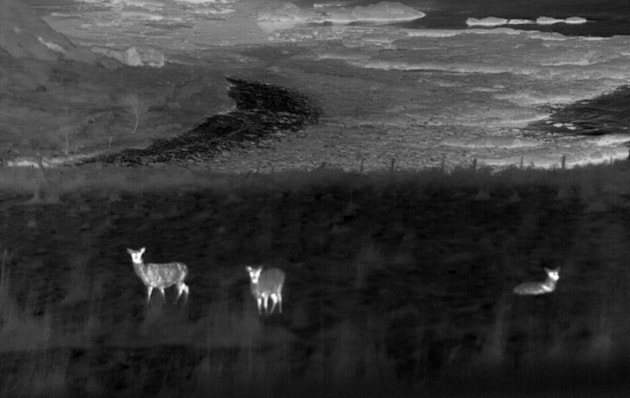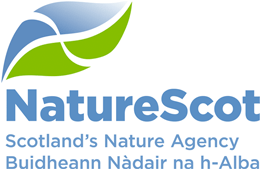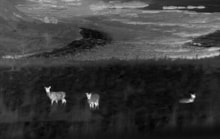30 October, 2025
Deer collision road safety campaign expanded

A road safety campaign to reduce deer-vehicle collisions at a high-risk location on the A9 has been expanded thanks to community feedback and new research.
Drivers will be advised to slow down and look out for deer crossing the road along a 15km stretch of the A9 from Lothbeg to Ord of Caithness from this weekend.
This year NatureScot is working with Transport Scotland and BEAR Scotland to display warning messages on both fixed and mobile electronic signs along a longer stretch of the road following feedback from local communities.
The campaign will run from November 1 to November 29, with speed monitoring taking place a week before, during and after to evaluate the effectiveness of the signs.
In recent years, data has shown an increased risk of deer-vehicle collisions in the Navidale area. Other high-risk locations tend to be found in the Central Belt and are linked to the dispersal of young roe deer in the spring.
In contrast, the species of most concern at Navidale is red deer as they move from higher moorland to better pasture at lower altitudes in autumn.
Recent research commissioned by NatureScot found high numbers of deer frequently crossing the road from areas of cover on the hillside to more open grazing land on the coast side of the road. A thermal imaging survey picked up total of 88 different red deer along the stretch on one night alone.
Dominic Sargent, NatureScot Deer Policy Officer, said: “At this time of year red deer stags in particular may be tempted to richer feeding grounds to recover following their rutting activity. At Navidale this results in them crossing the road. At the same time, the shorter days and the clocks going back in late October also mean that the times of peak traffic coincide with dawn and dusk when deer are often most active.
“Feedback from the local community and research on-the-ground is giving us a much better picture of deer movements in this area, which will help us as we continue to explore potential mitigation options, including considering wider deer management in the area. This campaign is an important reminder to drivers to be ‘deer aware’ on this stretch of road.”
Angus Corby, Transport Scotland Landscape and Biodiversity Manager, said: “We continue to work closely with colleagues in NatureScot and our Operating Company contractors to assess the extent and impact of deer-vehicle collisions across Scotland’s trunk roads, and to determine where mitigation is most needed. This work is a vital part of the overall management of the Network for the reliability of these strategic transport routes and the safety of those using them. It is also important for the welfare of the wild deer which are an intrinsic part of the landscape.
“The proposals at A9 Navidale have been designed to remind drivers of the potential risks of deer crossing the road at this time of year, but will also provide valuable information about the impact of the mobile warning signs, helping to refine the options available to reduce future occurrences.”
Contact information
- Name
- NatureScot Media
- Telephone
- 0131 316 2655
- media@nature.scot
Notes to editors
Tips for driving safely:
- Particularly in peak times, slow down and watch for deer crossing roads. Be aware that if along wooded or heavily vegetated verges, deer can suddenly appear, leaving little time and distance for braking.
- Try not to swerve to avoid hitting a deer. A loss of vehicle control or a collision into oncoming traffic could be even worse.
- Only brake sharply and stop if there is no danger of being hit by following traffic. Try to come to a stop as far away from the animals as possible to allow them to leave the roadside without panic and use your hazard warning lights.
- After dark, use full-beams when there is no oncoming traffic, as this will illuminate the eyes of deer on or near a roadway and give you more time to react. But dim your headlights when you see a deer or other animal on the road so you don’t startle it.
- Report any deer-vehicle collisions to the police; they can arrange for assistance with injured deer or removal of deceased deer. Even if you’re uninjured and your car isn’t damaged, the deer may be fatally injured and suffering. Do not approach an injured deer yourself – it may be dangerous.
NatureScot is Scotland's nature agency. We work to enhance our natural environment in Scotland and inspire everyone to care more about it. Our priority is a nature-rich future for Scotland and an effective response to the climate emergency. For more information, visit our website at www.nature.scot or follow us on X at https://x.com/NatureScot
’S e NatureScot buidheann nàdair na h-Alba. Bidh sinn a’ neartachadh àrainneachd na h-Alba agus a’ brosnachadh dhaoine gu barrachd suim a chur ann an nàdar. Tha e mar phrìomhachas againn gum bi nàdar na h-Alba beairteach agus gun dèilig sinn gu h-èifeachdach le èiginn na gnàth-shìde. Tha an tuilleadh fiosrachaidh aig www.nature.scot no air X aig https://x.com/NatureScot


